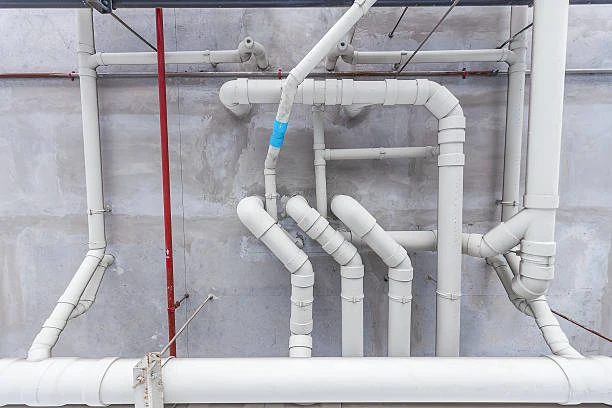The expansion of the PVC pipe recycling scheme to Central Queensland marks a significant milestone in promoting sustainability and environmental responsibility in the region. PVC (Polyvinyl Chloride) pipes, widely used in plumbing systems, have long been a staple of construction and infrastructure projects due to their durability, affordability, and ease of installation. However, the growing awareness of plastic waste has led to increased efforts to recycle and reuse PVC materials, particularly in the plumbing sector. This article explores the expanded PVC pipe recycling scheme and its implications for the future of PVC plumbing fittings in Central Queensland.

The Importance of PVC Recycling
PVC pipes and plumbing fittings have become essential components in construction and infrastructure due to their longevity and resistance to corrosion. However, the environmental impact of PVC plastic, when not disposed of correctly, has been a concern. Recycling PVC pipes helps to reduce landfill waste, conserve raw materials, and lower the environmental footprint of construction projects. The new initiative in Central Queensland aims to recycle PVC plumbing fittings and pipes in a systematic, efficient manner, giving them a second life in new applications, while reducing the amount of plastic waste in landfills.
Expansion of the Recycling Scheme
Previously limited to specific areas, the PVC pipe recycling program has now been expanded to Central Queensland, making it easier for both businesses and residents to participate in responsible waste management. The expansion involves the establishment of more collection points and increased awareness about the benefits of recycling PVC pipes and fittings. Central Queensland, known for its construction and mining industries, produces large quantities of PVC waste from new builds, renovations, and infrastructure projects.
What Does the Expansion Mean for Local Industries?
The expansion of the recycling program will have a substantial impact on local industries, particularly those involved in plumbing and construction. Many businesses in Central Queensland rely on PVC plumbing fittings for their durability and affordability in various plumbing applications. By encouraging the recycling of these fittings, local companies can reduce costs associated with waste disposal and contribute to a circular economy. Furthermore, the initiative supports the industry’s goal of reducing environmental impact and aligns with broader sustainability goals in the region.
The Process of Recycling PVC Plumbing Fittings
Recycling PVC plumbing fittings involves a well-established process that begins with the collection and transportation of discarded materials to recycling facilities. For plumbing fittings, this could mean the creation of new pipes, fittings, or other construction materials.
The Environmental Benefits of Recycling PVC Plumbing Fittings
The environmental benefits of recycling PVC plumbing fittings are significant. Recycling PVC helps to minimize waste, reduce pollution, and conserve resources. Additionally, the energy required to process recycled PVC is lower than producing new PVC from raw materials, further reducing the carbon footprint of construction projects. By expanding the PVC recycling program in Central Queensland, the region takes a positive step toward reducing its environmental impact and promoting sustainable building practices.
Overcoming Challenges in PVC Plumbing Fittings
While PVC recycling offers numerous benefits, it is not without its challenges. The recycling of PVC plumbing fittings requires a specialized approach, as not all PVC waste is suitable for recycling. Contamination, such as the presence of paint, adhesives, or other chemicals, can complicate the recycling process and affect the quality of the recycled material. To address this, the new recycling program in Central Queensland emphasizes the importance of clean, uncontaminated PVC waste. Additionally, ongoing education and outreach to local businesses and the public will help ensure that the recycling process is as effective as possible.
Future of PVC Recycling in Central Queensland
As the region continues to focus on sustainable practices, the demand for recycled PVC plumbing fittings will likely increase. Moreover, as awareness grows and more people participate in recycling programs, the region may see a reduction in overall plastic waste and an increase in the use of recycled materials in new construction projects.
How Can You Participate in the Recycling Program?
It is important to ensure that the items are clean and free from contaminants to ensure the success of the recycling process. Additionally, businesses can adopt better waste management practices, such as sorting PVC materials and sending them to designated recycling centers.
FAQ:
Q: What types of PVC plumbing fittings can be recycled?
A: Most standard PVC plumbing fittings, including pipes, elbows, tees, and connectors, can be recycled. It is important to clean them before recycling to remove any contaminants.
Q: Where can I drop off my PVC waste for recycling?
A: There are several designated collection points and recycling centers across Central Queensland. You can find the nearest location by visiting the local government website or contacting your local waste management service.
Q: Will recycled PVC plumbing fittings be of the same quality as new ones?
A: Yes, recycled PVC plumbing fittings can maintain similar quality to new ones. The recycling process ensures that the material is reprocessed to meet industry standards for durability and safety.
Q: Is there a cost associated with recycling PVC fittings?
A: In most cases, there is no cost for residents to drop off PVC plumbing fittings for recycling. However, some businesses may incur costs for the transportation and processing of larger quantities of PVC waste.
Q: How does PVC recycling help the environment?
A: Recycling PVC reduces landfill waste, conserves natural resources, and decreases carbon emissions associated with the production of new PVC. It also lowers the environmental impact of construction and plumbing industries.